▼ WEF releases Global Gender Gap Report 2016 [10-28-16]
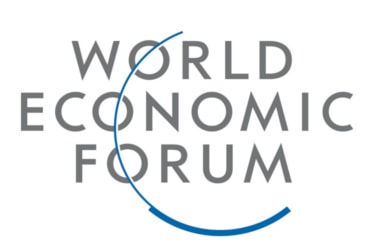 World Economic Forum on 25th October 2016 released the Global Gender Gap Report 2016 which provides scores for144 nations compared to 145 countries included in the 2015 report. World Economic Forum on 25th October 2016 released the Global Gender Gap Report 2016 which provides scores for144 nations compared to 145 countries included in the 2015 report.
- More than a decade of data has revealed that progress is too little for realising the complete potential of humanity within the lifetimes.
- Iceland topped the Gender Gap Index in the 8th consecutive year in a row.
- India stood at 87th position from the 108th position in 2015.
- As per the report, the global gender gap across health, education, economic opportunity and politics will take 83 years across 107 nations covered since the report was first released to close the gap completely.
Top 10 countries with high gender equality are as follows:
1. Iceland
2. Finland
3. Norway
4. Sweden
5. Rwanda
6. Ireland
7. The Philippines
8. Slovenia
9. New Zealand
10. Nicaragua
- Five countries with the least gender equality are Yemen, Pakistan, Syria. Saudi Arabia and Chad.
- Non European nations in the top 10 included Rwanda, The Philippines, New Zealand and Nicaragua.
- Of the 142 countries covered by the Index both this and last year, 68 nations have increased their overall gender gap score compared to 2015 while 74 have seen it decrease.
- No country in the world has closed the gender gap, but 4 out of 5 Nordic countries and Rwanda have closed more than 80 percent of theirs Yemen, the lowest ranking country has closed slightly less than 52 percent of its gender gap
- The Global Gender Gap Index reveals that all countries can do more to close the gender gap.
- Across the index, there are 5 countries that have closed 80 percent of the gap or more.
- Additionally, 64 countries have closed between 60 to 70 percent while 10 countries have closed between 50 to 60 percent.
- India has ranked at 87th position and succeeded in closing the gender gap with regard to wage equality and all indicators of Educational Attainment sub-index completely closing primary and secondary education enrolment gender gaps.
- It sees some regression on women estimated earned income and continues to rank third lowest in the world on health and survival.
- It is the world’s least improved country on this sub index over the past 10 years.
- Economic participation and opportunity was a field where India ranked in 136th position with 0.408 score.
- In the segment, India’s performance was one of the lowest among surveyed countries.
- In 2015, India was placed at 139th position while India was ranked at 113rd position with 0.408 score.
- In this segment, India’s performance was one of the lowest among the surveyed countries.
- In 2015, India was placed at 139th position.
- With an average remaining gender gap of 33 percent, the South Asia region is the second lowest scoring on this year’s Global Gender Gap Index ahead to the MENA and behind the Sub-Saharan Africa region.
- Bangladesh and India are top ranked nations in the region, having closed just over 70 percent and 68 percent of their overall gender gap, while the lowest ranked countries are Bhutan and Pakistan, having closed 64 percent and 56 percent of their overall gender gap respectively.
- No country in the region has fully closed its Educational Attainment gender gap and only one country Sri Lanka has completely closed its Health and Survival Gap.
- The region is home to one of top 5 climbers over the past decade on the overall Index and on Educational Attainment: Nepal.
- The ranks of BRICS countries in ascending order are South Africa, Russia, Brazil, China and India.
- Three basic concepts underlying the Global Gender Gap report include focuses on measuring gaps rather than levels, capturing gaps in outcome variables rather than input variables and ranking countries according to gender equality rather than women’s empowerment.
|
▼ Beware : Massive debit card fraud hits Indian shores [10-28-16]
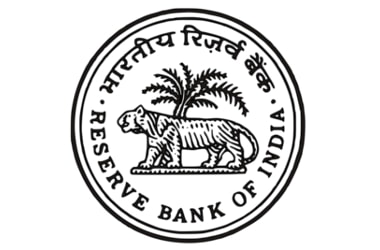 The RBI has requested that banks should change debit cards whose security is suspected to have been bargained in the wake of being utilised as part of ATMs. The RBI has requested that banks should change debit cards whose security is suspected to have been bargained in the wake of being utilised as part of ATMs.
- The issue was initially suspected by some payment gateways For example VISA, Mastercard and Rupay by the National Payments Corporation of India when it was noticed security could be ruptured in a few occasions.
- Credit and debit cards confront security issues when unapproved parties get access to classified details inserted in the card- such access may happen even as the card is being utilised as part of an ATM.
- Cards falling in the suspicious activities and requires substitution is estimated around 17.5 lakh.
- Total aggregate debit card base in the nation was 697 million starting July 2016.
- Banks for instance SBI, HDFC and BoB has began supplanting the cards.
- SBI, the nation’s biggest bank has begun the way towards supplanting 0.6 million check cards.
- A few banks such as Axis Bank, HDFC and ICICI Bank have conceded being hit by comparative digital assault driving Indian banks to either change or ask for clients to change their ATM pins around 3.2 million debit cards.
- In Sept 1st week, some banks witnessed fraudulent exchanges in which debit cards were utilised in China and the US whereas card holders are in India.
- Cardholders found many activities and filed complaints with banks.
- Banks held that NPCI which has regulation over retail payment frameworks in India should intervene.
- Test by NPCI found a malware prompted security break in the frameworks of Hitachi PaymentServices which gives ATMs, PoS and other different services in India.
- After the test found that ATM security could have been breached in May 2016, all there service suppliers asked banks to tell their customers who could be at hazard to change their PIN or issue them new cards.
- Many banks requested that clients change their ATM pins and issued new cards by making old ones null and void.
- This is one of the biggest information breaches in the nation with around 3.2 million cards issued by Indian banks could possibly be replaced.
- Holders were also requested that their PINS could be changed to avoid frauds.
- As per NPCI, 90 ATMs have been compromised and no less than 641 card holders of 19 banks have lost 1.3 crore as consequence of deceitful transactions on their debit cards.
- Malware is noxious programming including infections, worms, trojans, ransomware, spyware and different programs that harm PC frameworks at ATMs, bank servers and permit cybercriminals to get private debit card information.
|
▼ India ranks 13th in the protection of minority investors! [10-27-16]
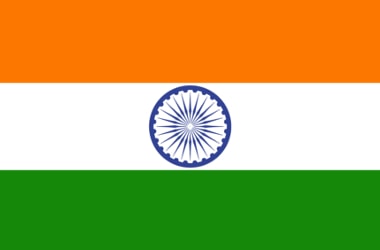 India has ranked 13th in the protection of minority investors. Global ranking in terms of protection of minority investors has slipped three notches to 13, but is much higher than the 130th rank attained by India for ease of doing business. India has ranked 13th in the protection of minority investors. Global ranking in terms of protection of minority investors has slipped three notches to 13, but is much higher than the 130th rank attained by India for ease of doing business.
- Sub-ranking for the protection of minority investors is topped jointly by New Zealand and Singapore
- Others that ranked higher than India are Hong Kong, Malaysia, Kazakhstan, the UK, Georgia, Canada, Norway the UAE, Slovenia and Israel
- In World Bank’s Doing Business report, India just moved one place from last year to 130
- Others that ranked higher than India are Hong Kong, Malaysia, Kazakhstan, the UK, Georgia, Canada, Norway, the UAE, Israel and Slovenia
- In the latest World Bank Doing Business report, New Zealand topped the list while Singapore was ranked second
- The report said protection of minority investors indicator measures the protection of shareholders in corporate governance
- According to the report, India carried out an ambitious, multi-year overhaul of its Companies Act, bringing Indian firms in line with global standards
- This is more so in respect of accountability and corporate governance practices while ensuring businesses contribute more to shared prosperity through a quantified and legislated CSR requirement
- Corporate regulation is an ongoing process, as per the new actions taken by the NDA government
- Two sets of amendments were released in August 2014 and May 2015
- A committee has been tasked with identifying more amendments to the Act and involving recommendations and concerns from private sector stakeholders and regulatory bodies
- India’s score increased in 3 of 6 indices of the protecting minority investors indicator set
- To simplify administrative requirements, the minimum paid in capital was abolished
- For instilling greater transparency, disclosure requirements especially in relation to related party transactions were initiated
- Bringing Indian firms in line with global standards, the Act increased disclosure requirements, particularly related party transactions
- India also became the first economy in the world with a quantified and legislated corporate social responsibility requirement
- Full fledged reforms can give policymakers the opportunity to innovate and sends a strong signal to the business community, the report said.
|
▼ Regulation for foreign investments in startups amended! [10-25-16]
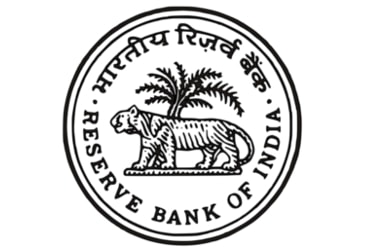 RBI has made changes to the Foreign Exchange Management (Transfer or Issue of Security By a Person Resident Outside India) Regulations 2000 to notify amended norms for foreign investment in startups RBI has made changes to the Foreign Exchange Management (Transfer or Issue of Security By a Person Resident Outside India) Regulations 2000 to notify amended norms for foreign investment in startups
- The notification states any FVCI/ Foreign Venture Capital Investors registered with SEBI will not acquire approval from the RBI and can invest in unlisted companies
- FVCI can invest in sectors such as infrastructure, biotechnology and seed research
- They can also invest in equity or equity linked instrument or debt instrument issued by an Indian startup regardless of the sector in which the startup is engaged
- They can invest in VCV registered with SEBI or units of scheme of a fund set up by VCF or Category 1 Alternative Investment Fund
- Downstream investments by a VCF or Cat-1 AIF which has received investment from FVCI will have to comply with provisions for downstream investment laid down in schedule 11 of the Principal Regulations
|
▼ India’s loan agreement with World Bank for EDFC-III project. [10-24-16]
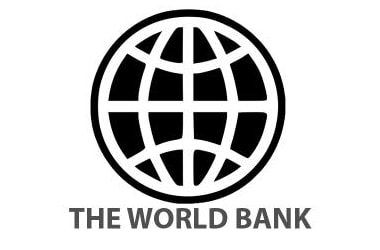 India on 21st Oct 2016 signed a USD 650 million dollar loan agreement with World Bank for the Eastern Dedicated Freight Corridor III project India on 21st Oct 2016 signed a USD 650 million dollar loan agreement with World Bank for the Eastern Dedicated Freight Corridor III project
- This project will benefit industries of Eastern and Northern India which rely on railway network for transportation of material inputs and exports
- Industries will depend on railway network for transportation for the distribution of bulk processed and semi-processed commodities and consumer goods
- Railway passengers will be benefited through decongestion of existing passenger lines
- The EDFC-III project was set to augment rail transport capacity, improve service quality and enhance freight carriage through a 401 km Ludhiana Khurja section of the Eastern Dedicated Freight Corridor
|
▼ SEBI’s new disclosure norms increase offer document transparency [10-21-16]
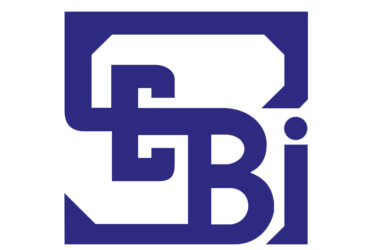 SEBI has placed disclosure norms in position for InvITs on 20th Oct 2016. The offer document will now contain financial information, related party transactions and past performances SEBI has placed disclosure norms in position for InvITs on 20th Oct 2016. The offer document will now contain financial information, related party transactions and past performances
- SEBI in the previous month decided to further relax InvITs norms in a bid to make the instrument more efficient for raising capital
- SEBI had notified InvIT regulations in 2014, permitting the setting up and listing of such trusts which are very popular in advanced markets
- No single trust has been set up yet as investors want further measures such as tax breaks to ensure instruments are more attractive
- SEBI said the official document will now contain financial information of past 3 financial years including balance sheet, profit and loss statement, income and expenditure and net assets and total returns.
- InvITs will also have to disclose commitments, contingent liabilities, earnings per unit, total debt, net worth and debt equity ratios before and after completion of issue
- Trust will have to make a statement about the history of interest and principal payments of InvIT and operating cash flow from the project for the past three years and interim period
- In the event of related party transactions involving acquisition or disposal of an InvIT asset, trust will have to part with information about the summer of the valuation report along with material obligations pertaining to the transaction and commissions got by any associates of the related party in relation to transaction.
|
▼ INR 60 crore ASPIRE Fund to promote rural innovation [10-21-16]
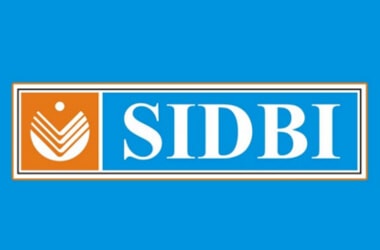 SIBDI has launched an INR 60 crore corpus ASPIRE Fund on 20th Oct 2016 to promote innovation, agricultural industry and rural entrepreneurship. SIDBI will focus on numerous angel/venture capital funds that will invest in start ups or early stage enterprises, based on value addition in the rural economy and job creation through social impact funding SIBDI has launched an INR 60 crore corpus ASPIRE Fund on 20th Oct 2016 to promote innovation, agricultural industry and rural entrepreneurship. SIDBI will focus on numerous angel/venture capital funds that will invest in start ups or early stage enterprises, based on value addition in the rural economy and job creation through social impact funding
- The INR 60 crore funds of funds falls under ASPIRE or A Scheme for Promotion of Innovation and Rural Entrepreneurship and Agro Industry
- This supports various venture capital funds registered with the market regulator SEBI for investing in startups in the agro and rural space
- Government initiatives such as ASPIRE are one of many steps for providing support to various venture capital for unleashing the potential of MSME
- ASPIRE has an aggregate corpus of INR 200 crore and SIDBI is also launching the India Aspiration Fund under which 35 funds have been extended aggregate support of INT 1211.75 crore
|
▼ Framework for penalising on payment issues released by RBI [10-21-16]
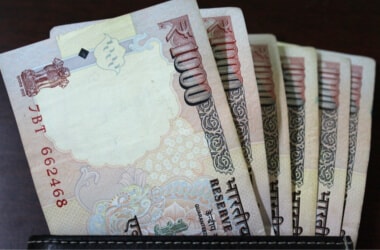 RBI came out with a framework for penalising banks and payment systems operators for offences under the Payment and Settlement Systems Act with fines of up to INR 1 crore RBI came out with a framework for penalising banks and payment systems operators for offences under the Payment and Settlement Systems Act with fines of up to INR 1 crore
- A framework has been put up for imposition of penalty/fine under section 30 of the PSS Act and compounding contraventions or offences under section 31 of the PSS Act
- Contravention of the provisions of the PSS act, non compliance of directions or orders made thereunder and violation of terms and conditions of authorisation will result in fines.
- Fines will be based on nature of offences or contraventions and there will be minimum penalty of INR 5 lakh which can go to INR 1 crore
- Entities which have been made to pay the fine will disclose the same in their annual financial statement
- RBI will also make the penalty public
- RBI will directly debit the current account while those not having the facility with the central bank will have to deposit the amount into designated RBI account within one week of the issue of written order
- Non payment will be dealt as per provisions of the PSS Act
|
▼ RBI permits 100 percent FDI in financial services [10-21-16]
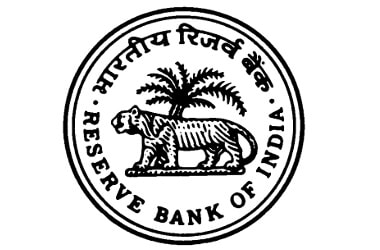 In a move to attract foreign capital in the country, RBI has permitted 100 percent FDI in other financial services carried out by NBFCs. In a move to attract foreign capital in the country, RBI has permitted 100 percent FDI in other financial services carried out by NBFCs.
- In consultation with the government of India, it has been decided to permit foreign investment up to 100 percent under the automatic routes in Other Financial Services
- These financial services include activities regulated by any financial sector regulator namely RBI, SEBI, IRDA, PFRDA, NHB or any financial sector regulatory body
- Such foreign investment would be subject to conditionality including minimum capitalisation norms
- Other salient features of the revised regulatory framework include downstream investment by any entity engaged in Other Financial Services and will be subject to extant sectoral regulations
- In the Budget 2016-2017 Speech, FM Arun Jaitley had announced about this liberation.
- Currently 100 percent FDI is allowed in 18 NBFC activities such as merchant banking, underwriting, portfolio management services, stock broking and financial consultancy
- In 2015-2016, FDI in India grew by 29 percent Y-O-Y to USD 40 billion.
|
▼ 3 new hydropower projects to change HP’s economic horizon [10-20-16]
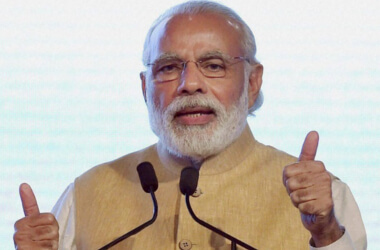 PM Narendra Modi visited Mandi in Himachal Pradesh where he dedicated three hydropower projects to the nation namely Koldam, Parbati and Rampur PM Narendra Modi visited Mandi in Himachal Pradesh where he dedicated three hydropower projects to the nation namely Koldam, Parbati and Rampur
- PM Modi on 18th Oct inaugurated the three hydropower projects of 1752 MW capacities in HP
- Inauguration of the new hydropower projects will change economic horizon of the hilly state
- The three hydropower projects are:
540 MW generation capacity third phase of Parbati hydropower project of NHPC in Kullu
800 MW Koldam power project in Bilaspur district
412 MW Rampur Project of SJVN Ltd in Shimla- This was the PM’s Maiden visit to the hill state after becoming PM
|
▼ 2015-2016: Base year to calculate state revenue as per GST Council [10-20-16]
The Goods and Services Council on 18th October 2016 reached a consensus on the way in which states would be compensated for loss of revenue with a four slab structure of 6, 12, 18 and 26 along with lower rates for essential items and highest band for luxury goods - Base year for calculating the revenue of the state would be 2015-2016
- Secular growth rate of 14% would be taken for calculating the likely revenue of each state in the first 5 years of implementation of the GST
- A consensus was reached on definition of revenue to compensate the state for revenue loss due to GST implementation
- Rate structure should be such that it does not lead to further inflation and both States and Centre have adequate funds to discharge their duty.
- The rate is to be revenue neutral so that there is no need to burden consumers with additional tax
- To ensure inflation remains under control, food items along with other 50 percent items of common usage are proposed for tax exemption
- Lower rates would be levied on essential items and the highest for luxury and demerit goods
|
▼ Country wide GST to be implemented across India! [10-19-16]
India’s plan to implement a nation-wide GST entered the final stage with the GST Council coming up with a formula to compensate states in the event of revenue loss after the new system is adopted - On 18th Oct 2016, the council decided 2015-2016 will be taken as the base year for calculating revenue assuming secular and long term growth rate of 14 percent.
- States will be fully compensated for potential revenue loss up to 5 years
- GST Council has also finalised area based exemptions and 1 states including 8 NE states and three hilly states will be treated under the new tax regime.
- The tax exemption provided by the states as incentives to the industry will be counted in the definition of revenue for calculation of revenue loss
- Objective is to ensure rates will not be inflationary
- There could be four slabs of GST rates namely 6,12,18 and 26 percent
- The cess on the highest band could be for ultra luxury items and demerit items such as tobacco
- The panel under CEA has recommended a revenue neutral rate of 15- 15.5 percent with a standard rate of 17-18 percent levied on most goods and all services
|
▼ Indian banks face massive deposit erosion [10-17-16]
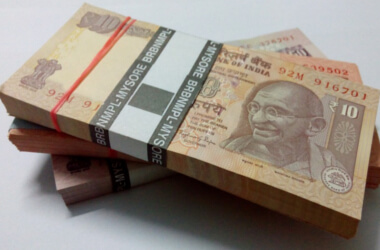 Indian banks are staring at deposit erosion of INR 1.5-2 lakh between Sept and Nov 2016 as Foreign Currency Non Resident deposits mobilised in 2013 mature around that period Indian banks are staring at deposit erosion of INR 1.5-2 lakh between Sept and Nov 2016 as Foreign Currency Non Resident deposits mobilised in 2013 mature around that period
- This could result in acute liquidity shortage and possible de-growth of balance sheets
- At the deposit growth rate currently, mobilisation by banks is to the tune of INR 2.4 lakh crore deposits in three months
- To maintain the same growth, banks will need to raise INR 4 lakh crore in three months
- Liquidity impact is to be felt by banks around maturity time
- RBI is also planning liquidity support and special measures to nullify shortage
- Central Bank also has build up a long forwards position in dollars amounting to USD 21.15 billion in more than three months and up to one year segment that can be used for honouring the pay-outs
- Central Bank’s social position will be around USD 24.67 billion indicating RBI will infuse dollars to prevent exchange rate volatility
|
▼ RBI ED Gurumoorthy Mahalingam - Whole-Time member of SEBI [10-17-16]
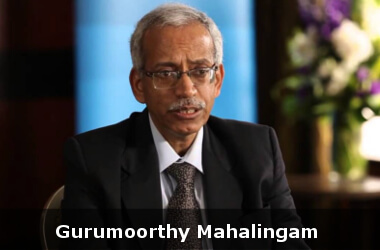 RBI’s Executive Director Gurumoorthi Mahalingam has been appointed as the whole-time member of market regulatory SEBI RBI’s Executive Director Gurumoorthi Mahalingam has been appointed as the whole-time member of market regulatory SEBI
- His appointment was approved by the Union Finance Ministry for 5 years or till he attains the age of 65, whichever is earlier.
- Mahalingam succeeds Prashant Saran as whole-time member
- Saran retired from the post in June 2016
- Aside from the Chairman, SEBI has three more Whole-Time members / WTMs
- Mahalingam is an ED and former regional director of the RBI
- In his current role in RBI, Mahalingam was involved in monitoring and surveillance of money, forex, government securities and derivative market intervention operations
- Associated with the RBI for the past 3 decades, he has held various posts in the organisation
- He has been associated with NISM or National Institute of Securities Markets, an educational initiative of the SEBI as its visiting faculty
- He holds an MSc in Statistics and Operations Research from IIT-K and an MBA in International Banking and Finance from Birmingham Business School in the United Kingdom
|
▼ Government issues draft norms under bankruptcy code [10-12-16]
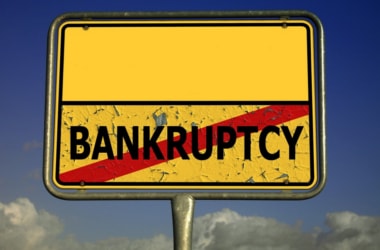 Government of India has come out with another set of draft rules including liquidation of insolvent corporate persons under the Insolvency and Bankruptcy code Government of India has come out with another set of draft rules including liquidation of insolvent corporate persons under the Insolvency and Bankruptcy code
- As part of implementing the code, government of India has constituted the Insolvency and Bankruptcy Board of India
- Draft norms will be finalised after taking the stakeholder views into account
- Notified by the government in May, code seeks consolidation and amendment of laws relating to reorganisation and insolvency resolution of corporate persons, partnership firms and individuals in a timely manner
- Latest set of draft regulations relate to liquidation of insolvent corporate persons, insolvency resolution processes for corporate persons and application to the judicial authority
- Ministry has also issued draft regulations for registration of insolvency professionals, agencies and model bye-laws
- The IBBI chaired by MS Sahoo will have 10 members
- Apart from the chairman currently there are 4 government nominated members and the rest will be appointed in the coming months.
|
▼ Fixed term apparel sector employment for workers in India: Labour Ministry [10-10-16]
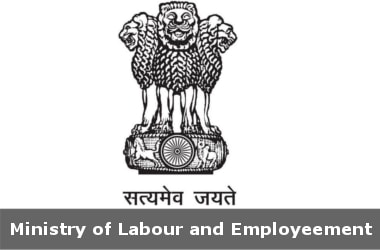 GoI has introduced fixed term employment in the apparel sector. The Labour Ministry notified the amendments in the Industrial Employment (Standing Orders) paving the way for fixed term employment in the apparel manufacturing sector GoI has introduced fixed term employment in the apparel sector. The Labour Ministry notified the amendments in the Industrial Employment (Standing Orders) paving the way for fixed term employment in the apparel manufacturing sector
- Decision would facilitate employment of workers in the apparel manufacturing sector on a fixed term basis against the backdrop of the seasonal character of the sector
- It would also ensure sam working conditions, wages and other benefits for fixed term employees in the sector as a regular employee
- Following the termination of fixed term employment, workers will not be entitled to notice or pay
- This move has been critiqued by many labour unions including BMS which have termed it anti worker
- Fixed term employment in the apparel manufacturing sector was introduced as part of the Industrial Employment(Standing Order) Act vide notification dates Oct 7, 2016
- The working conditions in terms of hours, wages, allowances and statutory dues of the fixed term employee would be at par with a permanent one
- FIxed term workers will also be eligible for statutory benefits available to permanent workers in proportion to the period of service rendered by them though the period of employment does not extend to the qualifying period of the employment required in the statue
- This is one of the measures approved in an INR 6000 crore package for textile sectors announced in June in 2016
- Measures assume significance due to massive potential for social transformation through women empowerment
- Close to 70 percent of the workforce in the garment industry are women
- Therefore, a majority of the new jobs created are more likely to go to women
|
▼ Remittances to India decline by 5% in 2016 [10-10-16]
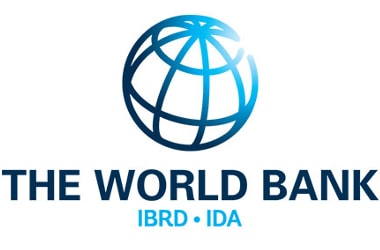 World Bank India, the world’s largest remittance recipient in 2015 may receive a remittance of USD 65.5 billion this year, a drop of 5 percent according to the World Bank. World Bank India, the world’s largest remittance recipient in 2015 may receive a remittance of USD 65.5 billion this year, a drop of 5 percent according to the World Bank.
- The reason for this is weak economic growth in remittance source countries and cyclic low oil prices
- In 2016, remittance flows are expected to decline by 5% in India and 3.5% in Bangladesh while they will grow by 5.1% in Pakistan and 1.6 percent in Sri Lanka, the latest report on remittances said
- Despite the drop, India is topping the countries receiving remittance this year, according to most estimates
- The World Bank indicated in 2016, India is expected to receive a remittance of USD 65.5 billion followed by China (USD 65.2 billion)
- Pakistan is positioned at number 5 and estimated to receive USD 20.3 billion in 2016
- Remittances to South Asia are expected to decline by 2.3 percent in 2016 following a 1.6 percent decline in 2015
- This is due to weak economic growth in remittances source countries and cyclic low oil prices
- India retained its top spot in 2015, attracting close to USD 69 billion in remittances according to the World Bank
- Remittances from GCC countries continued to decline on account of lower oil prices and about market nationalisation policies in Saudi Arabia
- Gulf Cooperation Council is an alliance of 6 Middle Eastern companies- Kuwait, Saudi arabia, UAE, Oman, Bahrain and Qatar
- This is set against the backdrop of tepid global growth, remittance flows to low and middle income countries to low and middle income countries
- New normal of slow growth has been entered and in 2016, remittance flows to LMIC are projected to reach USD 442 billion, marking an increase of 0.8percent over 2015
- Modest recovery in 2016 is largely driven by an increase in remittance flows to Latin America and the Caribbean on the basis of a stronger economy in the US
- By contrast, the remittance flows to other developing regions either fell or recorded a deceleration in growth
- Low prices continued to be a factor in reduced remittance flows from Russia and the GCC countries
- Additionally, structural factors have also played a role in dampening remittances growth
- Anti-money laundering efforts have prompted banks to shit accounts of money transfer operators, diverting activity to informal channels
- Remittances continue to be an important component of the global economy, surpassing international aid
- This new normal of weak growth in remittances can impact economies across the globe and create a new set of challenges for economic growth.
|
▼ What is Public Debt Management Cell? [10-7-16]
Union Finance Ministry on Oct 4, constituted the Public Debt Management Cell. The cell has been created to streamline public borrowing and ensure better cash management with the objective of deepening bond markets. Currently, the overall in charge of the PDMC will be the Joint secretary (Budget) Department of Economic Affairs, Ministry of Finance. - In two years, the PDMC is scheduled to be upgraded to a statutory Public Debt Management Agency
- The interim arrangement will permit separation of debt management functions from RBI to PDMA in a seamless and gradual manner without market disruptions
- The PDMA will have only advisory functions to avoid conflict with RBI’s statutory functions
- It will also advise government of India on matters pertaining to investment, capital market operations, administration of interest rates on small savings among others
- Middle office of the Budget Division will be subsumed into PDMC with immediate effect
- Transition from PDMC to PDMA will be implemented by JIC or Joint Implementation Committee chaired by the Joint Secretary Budget
- Other members of the JIC will be from the RBI and the government
- According to a circular issued by the ministry, the JIC would operate under the supervision of the Monitoring Group on Cash and Debt Management with Secretary Economic Affairs and D-G, RBI as co-chairpersons.
- PDMC will be staffed by debt managers from the RBI budget division, current Middle Office and other government units
- The PDMA seeks to bring India’s external borrowings and domestic debt under one roof.
|
▼ WB fixes GDP at 7.6 in 2016, 7.7 in 2017 [10-7-16]
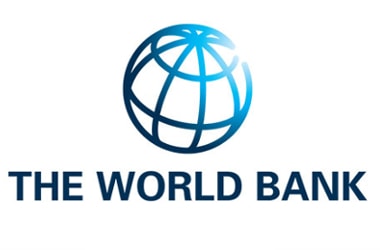 Following the MPC, the World Bank has indicated that the GDP growth of India will remain robust in 2016 at 7.6 percent and 2017 at 7.7. percent Following the MPC, the World Bank has indicated that the GDP growth of India will remain robust in 2016 at 7.6 percent and 2017 at 7.7. percent
- As per the World Bank, Indian economic growth will remain robust and poverty eradication will top the agenda
- South Asia remains a global growth hotspot and resilient to headwinds such as slowdown in China
- Even in South Asian countries like Pakistan growth is expected to reach 5.4 percent in 2018 and Bangladesh will sustain growth at 6.8 percent
- The main challenges remain domestic, and include policy uncertainty as well as fiscal and fiscal vulnerabilities.
|
▼ 1st Indian BRICS trade fair to boost trade among nations [10-4-16]
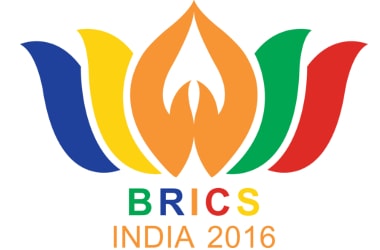 To boost trade among the BRICS nations, India will, for the first time, organise a trade fair for the bloc including BRICS To boost trade among the BRICS nations, India will, for the first time, organise a trade fair for the bloc including BRICS
- Intra BRICS trade in 2014 was USD 297 billion- less than 5 % of the USD 6.5 trillion worth trade that the five countries had with the world that year
- Goods imports from the world onto the BRICS countries amounted to USD 3.03 trillion in 2014 while global goods exports of BRICS nations were USD 3.47 trillion that year
- The first BRICS Trade Fair and Exhibition will be held from Oct 12=14 in the NCT ahead of the BRICS political summit in Goa (Oct 15-16 2016)
- Initiative was proposed by PM Modi in 2015
- The focus of the fair is Building BRICS- Innovation for Collaboration
- The fair will promote intra BRICS economic engagement and showcase 20 key sectors including aerospace, auto, agro processing, chemicals, green energy, healthcare, railways and textile
- Startups and innovators will also showcase technology to solution providers in areas such as healthcare, education,waste management and energy efficiency
- Leaders from Bangladesh, Myanmar, Bhutan, Nepal and Thailand have also been invited to the fair
|
▼ INR 62,250 crore black money declared under IDS [10-3-16]
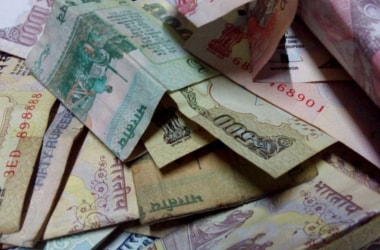 Finance Minister Arun Jaitley said that INR 65,250 crore in black or untaxed money has been disclosed under the Government’s Income Declaration Scheme (IDS). Finance Minister Arun Jaitley said that INR 65,250 crore in black or untaxed money has been disclosed under the Government’s Income Declaration Scheme (IDS).
- The one-time compliance window closed .
- As per the scheme, launched on June 1, those who evaded taxes were allowed to avoid punishment by paying tax, penalty and cess totalling 45% of the declared income.
- Reiterating that the one-time window was not an amnesty scheme like the 1997 one, Jaitley said the tax collected in the 1997 Voluntary Disclosure of Income Scheme (VDIS) was Rs 9,760 crore with an average declaration of Rs 7 lakh.
- The tax collected from the Income Declaration Scheme (IDS) 2016 will go into the Consolidated Fund of India and will be used for larger welfare of people, he added.
- Scheme was operational from June 1 till the midnight of September 30, the finance minister said the tax authorities were still tabulating the declarations, both in physical and electronic form.
- Roughly, the declarations work out to INR 1 crore per declarant.
|
▼ RBI forms Monetary Policy Committee for Finance Act 2016! [10-3-16]
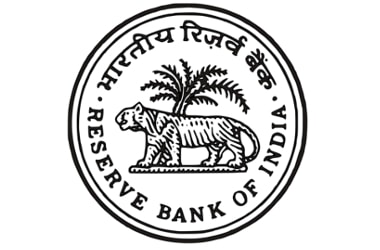 The Reserve Bank of India Act 1934 has been amended by the Finance Act 2016 to provide for an institutionalised and statutory framework for price stability through the Monetary Policy Committee The Reserve Bank of India Act 1934 has been amended by the Finance Act 2016 to provide for an institutionalised and statutory framework for price stability through the Monetary Policy Committee
- As per the provisions of the RBI Act, of the six members of the Monetary Policy Committee, three are from the RBI
- Other three members of the MPC will be appointed by the Central Government
- In exercise of the powers given by section 45ZB of the Reserve Bank of India Act 1934, the Union Government has constituted the Monetary Policy Committee of the RBI with the composition:
- The Governor of the Bank: Ex Officio Chairperson
- Deputy Governor of the Bank, in charge of Monetary Policy: Member,ex officio
- One officer of the Bank to be nominated from the Central Board: Member, ex officio
- Chetan Ghate, Professor ISI: Member
- Pami Dua, Director, DSE: Member
- Ravindra Dholakia, Professor, IIM-A: Member
- Members of the Monetary Policy Committee will hold office for 4 years
- Monetary Policy Committee has been appointed with the aim of fixing the benchmark policy rate or repo rate required to combat inflation within a specified target level.
- Committee based approach for determining Monetary Policy adds value and transparency to the monetary policy decisions.
- Meetings of the Committee will be held 4 times in a year and decisions will be published after each such meeting
|
| Chronology of events |
|
The Union Government on 30 September 2016 decided to raise the Employees Provident Fund (EPF) investment in Exchange Traded Fund (ETF) from existing 5 to 10 percent
|
|
W.e.f 3rd Oct, GoI has simplified the form required for incorporation of companies and submission of related documents; the new electronic pro forma aims at speeding up the incorporation related services.
|
|
The first-ever BRICS trade fair will be held in New Delhi
|
|
Indirect tax collection jumps 26% in Apr-Sep, direct tax 9% Government's revenue collection in April to September saw indirect tax collection growing at an impressive 26 percent while that of direct tax came in at a tepid 9 percent. The total direct and indirect tax collections at the end of September stood at Rs 7.35 lakh crore, approximately half the Rs 16.26 lakh crore target for 2016-17.
|
|
11 Odisha railways stations to be redeveloped through JV to strengthen rail infrastructure in Odisha; Railways will redevelop 11 stations including Bhubaneswar, Cuttack and Puri, along with Jharsuguda, Balasore, Bhadrak, Rourkela, Khurda Road and Rayagada
|
|
Factory output in April-August 2016 contracts by 0.3 per cent, compared to growth of 4.1 per cent in the year-ago period
|
|
India’s cotton yarn exports fell 11.58 per cent in value terms and 4.44 per cent in terms of volume during April - June in 2016 compared to the same period last year.
|
|
The Economic Development Board of Andhra Pradesh signed a pact with Russia's JSC United Shipping Corporation for setting up a ship-building unit in the state on 13th Oct 2016
|
|
INR 15000 crore to be invested by the Union Government to increase the Panipat Refinery capacity from 15MT to 25 MT
|
|
India’s Forex Reserves rose by USD 1 billion to USD 367.14 billion for the week ending Oct 21 on the back of increase in core currency assets.
|
|
The Benami Transactions (Prohibition) Amendment Act 2016 to curb black money will come into effect from Nov 1, 2016.
|